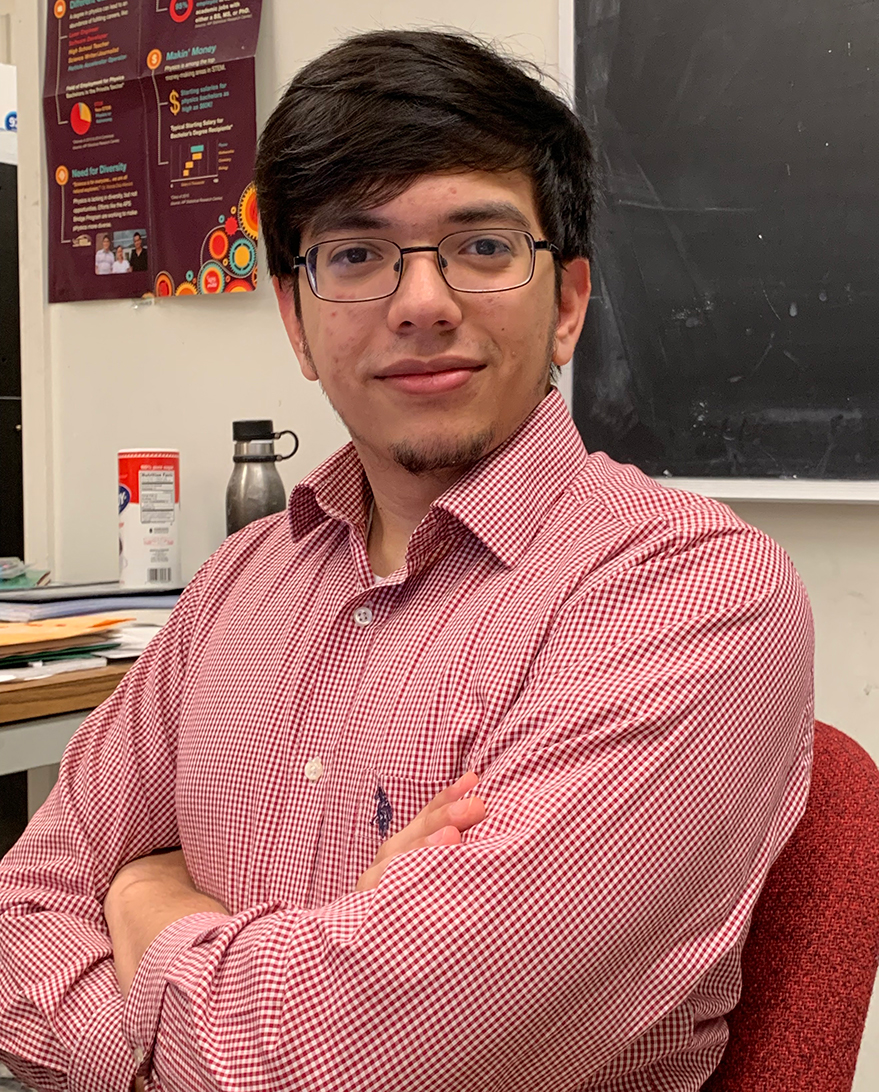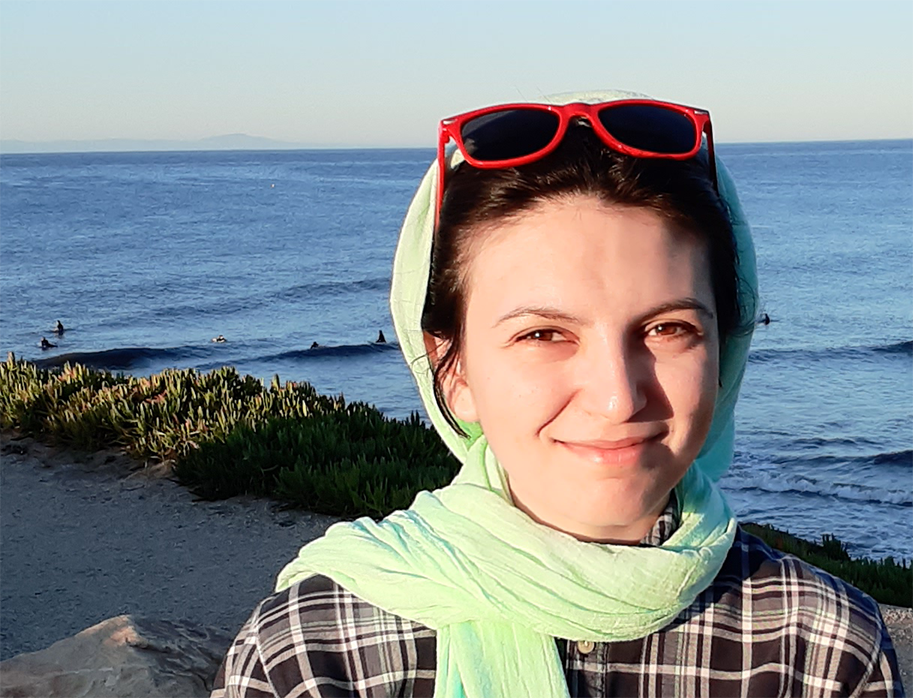- Details
-
Category: Department News
-
Published: Sunday, February 07 2021 05:13
Ellen Williams is an optimist. And she believes in the power of science and technology to help society solve grand challenges, like transitioning to clean energy and combating climate change. Williams, a Distinguished University Professor in the University of Maryland’s Department of Physics and Institute for Physical Science and Technology, approaches these challenges with a broader scope of experience than most.
In addition to spending over 30 years conducting research and teaching at UMD, Williams also served as chief scientist for British Petroleum (BP), as director of the U.S. Advanced Research Projects Agency-Energy (ARPA-E), and as a member of the Congressional Commission on the Strategic Posture of the United States, which was created to make recommendations on critical issues related to the country’s nuclear strategy.
In July 2020, Williams took on a new challenge—she began a five-year term as director of UMD’s Earth System Science Interdisciplinary Center (ESSIC).
The twists and turns in her career are testament to the power of hard work and a fearless approach to new opportunities. Williams filled roles she didn’t even know to dream about as a child growing up in the suburbs of Detroit.
“I didn't really understand what a scientist did or what it would mean to be a scientist,” Williams said about her career ambitions in high school. “But I enjoyed my chemistry classes, and I thought, ‘Well, I can major in chemistry and I can always go to med school because I know what a doctor does.’”
That backup plan turned out to be unnecessary. By the time she earned her bachelor's degree in chemistry from Michigan State University in 1976, Williams discovered an affinity for thermodynamics and statistical mechanics, and she learned there was a path for someone like her, someone who enjoyed research.
“I was very interested in this quantification of how molecules and atoms move around and behave themselves or don't, as the case may be,” she said. “I did research through my entire undergraduate career, and I just had a sense that there was lots of opportunity and lots of interesting things there. When someone said, ‘You know you can go to graduate school for this,’ I realized there was a pathway, and if others were doing it, I could do it.”
It was a time when not many women pursued research careers in chemistry, but looking back, Williams never really felt the gender gap. She was one of an unusually large cohort of women pursuing graduate degrees in chemistry at the California Institute of Technology, so she always felt supported. And her professors encouraged her to follow her interests.
Looking back, she may also have been more prepared than many to take on a highly technical field thanks to her father’s enthusiasm for the new technology of the time. An engineer for a car manufacturer in Detroit, Williams’ father was an early adopter of computers, and he encouraged her to take a computer science class during her senior year of high school. This was in the 1960s, the days of punch cards and room-sized mainframe computers. And although the class didn’t spark a particular interest in computer science as a career, it afforded Williams a familiarity with data and computing that would later help with her scientific research.
“I wasn’t afraid of data processing and computers, because I started out with some rudimentary computer skills already,” she said. “I’ve watched computing evolve and become a more and more important and powerful part of research, and having some computer skills in the beginning just meant I was ready to jump in.”
At Caltech, Williams continued her research in thermodynamics and statistical mechanics, earning a Ph.D. in chemistry in 1981. She joined UMD that same year as a postdoctoral fellow and rose through the ranks to become a professor in 1991.
“My research focus was really about understanding how you can go from the properties of individual atoms and molecules to understanding how they behave in the macroscopic world, which turns out to be a totally nontrivial problem,” she said.
Nontrivial indeed. Those questions remained her central focus for the next few decades, propelling her research program in experimental surface science to international renown. She also pioneered the use of very powerful scanning tunneling microscopes to study the surface of materials like silicon at the atomic level. In 1996, Williams founded the University of Maryland Materials Research Science and Engineering Center, serving as its director until 2009.
Then industry came knocking.
“It kind of came out of the blue when I got a phone call from BP,” Williams recalled. “But it was the right phone call. I wanted to become engaged with energy and particularly clean energy topics, and it woke up an old longing in me.”
Williams still remembers the excitement she felt about the first Earth Day. It was 1970, and she was still in high school.
“It was a time of so many exciting ideas—the women’s movement, anti-war protests,” she said. “And out of all of it, Earth Day really influenced my thinking. Hearing about pollution and the impact on the environment of the wanton wastefulness and carelessness with which resources were being treated deeply offended me and made me feel very eager to have the world protected, and to make it right.”
Williams, who grew up hiking and camping with her family and learned about nature in part through Girl Scouts, said the call from BP reminded her of those earlier stirrings.
“I realized I still had a deep-seated desire to help make this right,” she said. “And this was an opportunity to do that. I said to myself, ‘I really think it's time for me to just step up and work on this social problem.’”
Williams took the job as BP’s chief scientist in 2010 after making it clear that one of the things she wanted to do was explore the broad impacts of a variety of energy production technologies on everything from carbon dioxide emissions to land, water and mineral use. Williams’ team at BP was responsible for the review process of all of the company’s applied research activities, which included producing oil and gas as well as developing alternative energy sources.
“That was such an amazing learning experience for me to really understand how the energy industry works,” Williams said. “It gave me a lot of confidence to think and speak about the transitions that we're facing and the realities of what's difficult, what's not difficult and what's more important versus what's less important.”
Her passion and expertise on those subjects attracted the attention of long-time colleague Ernest Moniz. As the U.S. Secretary of Energy under President Obama, Moniz tapped Williams to run ARPA-E, which has a mission to advance high-potential, high-impact energy technologies that are too early in development for private-sector investment.
“This was a dream job,” Williams remembers, despite a grueling yearlong Senate confirmation process that culminated in her appointment in late 2014. “The administration's policy was to explore ‘all of the above,’ that is all approaches to low-carbon energy production. ARPA-E was founded on the same kind of principles as DARPA, the Defense Advanced Research Projects Agency, which is to go out, look for high-risk, high-impact technologies, and provide support and resources to help them develop. If it doesn't look good, cancel the work quickly and move on. If it does look good, give it a good, hard push and see what you can do.”
One of Williams’ goals while at ARPA-E was to establish a documentation process for research outcomes, so that every project, whether it succeeded or failed, would have a record of what worked or didn’t and a detailed explanation of why to help guide any future explorations in similar areas.
The experience of running ARPA-E gave Williams a new appreciation for government work and all the elements that go into successful new technologies beyond the science-based research and development—the financing and business aspects, the market forces and the policy that impacts a new technology’s success or failure.
In 2017, with a shift in administration, Williams returned to UMD, and it wasn’t long before she was asked to lead ESSIC, which supports research that explores interactions between land, ocean, and atmospheric processes and the influence of the human imprint on our planet. As the largest research center at UMD, ESSIC provides the perfect opportunity for Williams to address issues of climate change in a multidisciplinary, collaborative setting. And she brings plenty of experience working with satellite data at both ARPA-E and as a consultant on nuclear disarmament issues for the U.S. government.
Williams sees an important role for ESSIC in informing various sectors of society as they adapt to a rapidly changing climate, from helping farmers understand shifts in climate zones and crop tolerances to informing infrastructure planners about water availability.
“We have amazing Earth system data coming to us from satellites, and the fact that we can make choices about what data we collect makes it possible for us to help people prepare to adapt to and deal with the climate change issues that we can't stop immediately,” Williams said. “If we stop burning so much fossil fuel, we will certainly slow down the process, but the train is moving and some of these changes are still going to happen and have to be reversed later.”
Bridging the gap between science, technology and policy has become a central focus of Williams’ work. Shortly after returning to UMD, she took the lead on a report mandated by the Maryland legislature that provided in-depth analysis of the state’s support of clean energy and offered recommendations to elevate Maryland’s leadership in clean energy innovation with economic benefits to its citizens.
Building bridges between sectors was also the subject of a course Williams developed and taught when she returned to UMD in 2017. The course, PHYS 662/PLCY699B: Intersections of Technology and Policy in Modernizing the Energy System, brought together public policy, science and engineering students to develop workable ideas for technologies to mitigate climate change. Although she has taken a break from teaching while she settles in at ESSIC, Williams hopes to offer the course again soon, because building partnerships across sectors and inspiring young researchers to collaborate is important to Williams.
It was also very important to her late husband, Neil Gehrels, who was a College Park Professor of Astronomy at UMD and chief of the Astroparticle Physics Laboratory at NASA's Goddard Space Flight Center. When Gehrels was awarded the prestigious Dan David Prize shortly before his death from cancer in 2017, Williams donated his share of the prize money to UMD to establish the Neil Gehrels Memorial Endowment in Astrophysics. The endowment provides postdoctoral fellowships to support collaborations between UMD and NASA Goddard scientists.
Supporting young scientists is something Williams knows about on a personal level as well, having raised a son who is an electrical engineer and a daughter with a Ph.D. in applied physics. Williams described having a household full of scientific minds as “phenomenal” and said it was thrilling to have such a profound sense of intellectual engagement in her home life as well as her professional life.
On the professional front, Williams said she feels fortunate to have had the opportunity to pursue basic scientific questions in her earlier career and then to address important solutions to societal challenges as she’s doing now.
“Basic science has played a huge, huge role in our ability to understand what's going on with the Earth and what's likely to happen in the future,” she said. “I think we're in an amazing place right now to be able to apply some of that understanding to real-life issues and to help address what’s happening in a meaningful way.”
Wherever her career takes her next, Williams will surely be working hard to bring meaningful, intelligent change that makes the world a little better.
Written by Kimbra Cutlip
 Jorge Ramirez Ortiz
Jorge Ramirez Ortiz